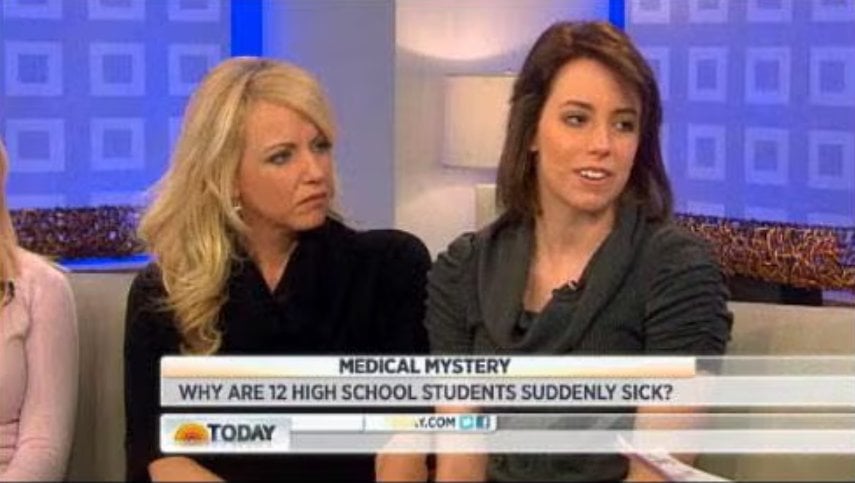
Katie Krautwurst was a cheerleader in high school in the small town of Le Roy in New York. One day in 2011, she awoke from a nap and knew something was wrong.
Her face started to contract into spasms as her chin jutted forward uncontrollably.
A few weeks later, her best friend awoke to the same thing.
Cheer captain Thera Sanchez woke up to her head jerking, her arms flailing, and she was stuttering and twitching.
Eventually, 17 different high schoolers would become afflicted by the mysterious twitches — that's 17 in a school of just 600 students, in a small town of 7,500 people.
The panic that confounded this tiny town — and the possible causes of the mystery illness — is the subject of a new Wondery podcast Hysterical. The podcast investigates the intriguing case of symptoms that resembled Tourette's syndrome spreading among a group of high school girls in Le Roy.
Hosted by Dan Taberski, the podcast delves deep into the Le Roy case, featuring interviews with affected individuals, their families, along with medical experts and investigators.
The podcast is worth a listen, but before you dive in, here's everything we know about this baffling case.
The mysterious tic epidemic in high school girls gripped the small town of Le Roy.
Picture this: You're a typical high school girl in a quiet American town. One day, you wake up from a nap and suddenly can't control your body. Twitches, spasms, and verbal outbursts take over.
Then, your friends start experiencing the same thing.

